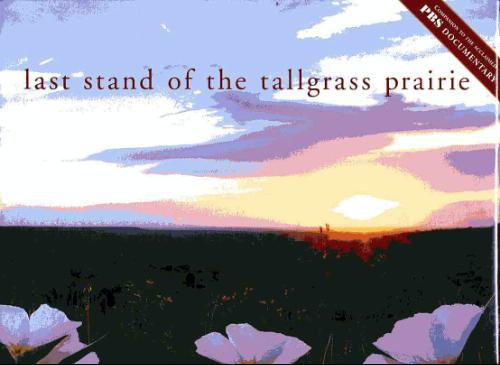 In 2001, a documentary film came out titled last stand of the tallgrass prairie (lower case letters are publisher’s choice). It included an introduction by singer Lyle Lovett, and was a call for the preservation of the Flint Hills in Kansas. This film, as well as the excellent companion book were part of a larger effort during the 1990s and early 2000s to establish a preserve in this unique part of Kansas, which was largely spared the plow due to its rocky soil. Since the mid 1800s, it had been used mostly as rangeland. Although invasive plant species have appeared in many areas, it represents the biggest parcel of native tallgrass prairie left, which is sadly only about 0.004% of what once existed in the continent’s midsection.
In 2001, a documentary film came out titled last stand of the tallgrass prairie (lower case letters are publisher’s choice). It included an introduction by singer Lyle Lovett, and was a call for the preservation of the Flint Hills in Kansas. This film, as well as the excellent companion book were part of a larger effort during the 1990s and early 2000s to establish a preserve in this unique part of Kansas, which was largely spared the plow due to its rocky soil. Since the mid 1800s, it had been used mostly as rangeland. Although invasive plant species have appeared in many areas, it represents the biggest parcel of native tallgrass prairie left, which is sadly only about 0.004% of what once existed in the continent’s midsection.
Luckily, the efforts to set aside this representative ecosystem paid off, and Tallgrass Prairie National Preserve was established in 1996. It is administered jointly by the National Park Service as well as The Nature Conservancy, which purchased much of the preserve’s 11,000 acres. I admit that I have never been there, but it is high on my list for sure, and although the Great Plains Trail will evolve in the mixed and shortgrass prairies further to the west, the tallgrass prairies remain an important piece of the larger Great Plains grassland ecosystem.
If you can’t find a copy of the entire documentary, here is is nice excerpt from youtube.
The book is also very well done and has some wonderful photography from various prairie reserves around the country. The book, by Aimee Larrabee and John Altman, is also titled last stand of the tallgrass prairie.


2 Responses
A good quote from last stand of the tallgrass prairie – “At first glance, it may appear empty… monotonous; but it’s beauty is subtle and glorious.”
Most people who drive through the prairie just get a “first glance.” That is why the prairie has a reputation of being boring. But those who spend time in the prairie know full well its beauty & grace. This is all the more reason why the Great Plains Trail is such a good idea. It will allow people to slow down and truly experience the panoramic scenery of the grasslands.
So true. It’s rarely a “jawdropper” like mountain scenery can be, but once you get to know it, it seems to become greater than the sum of its parts.